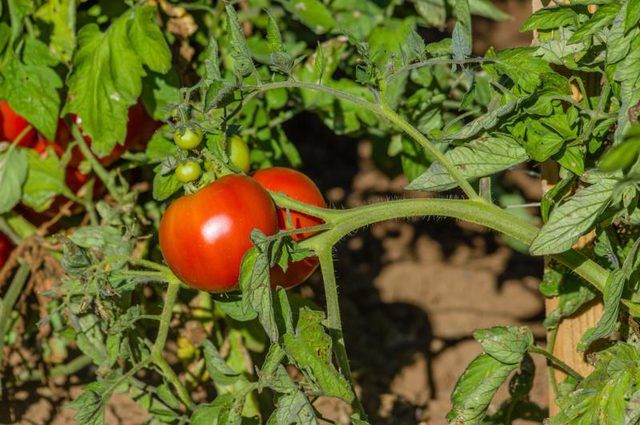Bulbs
Flower Basics
Flower Beds & Specialty Gardens
Flower Garden
Garden Furniture
Garden Gnomes
Garden Seeds
Garden Sheds
Garden Statues
Garden Tools & Supplies
Gardening Basics
Green & Organic
Groundcovers & Vines
Growing Annuals
Growing Basil
Growing Beans
Growing Berries
Growing Blueberries
Growing Cactus
Growing Corn
Growing Cotton
Growing Edibles
Growing Flowers
Growing Garlic
Growing Grapes
Growing Grass
Growing Herbs
Growing Jasmine
Growing Mint
Growing Mushrooms
Orchids
Growing Peanuts
Growing Perennials
Growing Plants
Growing Rosemary
Growing Roses
Growing Strawberries
Growing Sunflowers
Growing Thyme
Growing Tomatoes
Growing Tulips
Growing Vegetables
Herb Basics
Herb Garden
Indoor Growing
Landscaping Basics
Landscaping Patios
Landscaping Plants
Landscaping Shrubs
Landscaping Trees
Landscaping Walks & Pathways
Lawn Basics
Lawn Maintenance
Lawn Mowers
Lawn Ornaments
Lawn Planting
Lawn Tools
Outdoor Growing
Overall Landscape Planning
Pests, Weeds & Problems
Plant Basics
Rock Garden
Rose Garden
Shrubs
Soil
Specialty Gardens
Trees
Vegetable Garden
Yard Maintenance
Tomato Plant Diseases Identification
Tomato Plant Diseases Identification. Although easy to grow as an annual in the United States, the tomato plant (*Lycopersicon esculentum*) is, unfortunately, vulnerable to a wide variety of diseases. Choosing disease-resistant varieties, spacing plants adequately and keeping garden soil free of debris will help to prevent many common problems....

Although easy to grow as an annual in the United States, the tomato plant (Lycopersicon esculentum) is, unfortunately, vulnerable to a wide variety of diseases. Choosing disease-resistant varieties, spacing plants adequately and keeping garden soil free of debris will help to prevent many common problems. Knowing how to spot symptoms of bacterial or fungal infection will make disease identification and control easier.
Early Blight
This fungal disease is caused by Alternaria solani and triggered by periods of heavy rain combined with increasing temperatures at midseason. Also known as foliar or stem disorder, it is characterized by brownish-black lesions surrounded by halos of yellowing leaf tissue, which together form a bullís-eye pattern. Signs of infection typically appear in older leaves lower on the stem first, followed by angry-looking dark spots near the stem end of the fruit. Address the disease by promptly removing infected leaves, and avoid overwatering container-grown plants or overhead irrigation in the greenhouse, which encourages disease spread. For severe infestations, apply a premixed copper fungicide spray to all parts of the plant every seven to 10 days and again after it rains. Ideally, there should be a 12-hour window of dry weather after each application.
Bacterial Wilt
The Ralstonia solanacearum bacteria invades small breaks in the roots and self-replicates in the cellular walls of the plant, displacing stored water with a white or yellowish slimy substance. The earliest sign of this disease is the wilting of a few lower leaves. As the bacteria spread, the entire plant will be affected and die, often quite suddenly with high temperatures and humidity. There are no chemical controls for this disease, so infected plants must be pulled and destroyed. The best remedy is crop rotation with plants less susceptible to bacterial wilt, such as common beans (Phaseolus vulgaris), cabbage (Brassica oleracea) and corn (Zea mays), for at least three years. Meanwhile, consider growing tomatoes in containers with sterilized potting soil or in a different location in raised beds to improve drainage.
Fusarium Diseases
Fusarium oxysporum is a tomato fungus that causes Fusarium wilt. Symptoms begin with yellowing and drooping of older leaves, sometimes on only one side of the plant. The same fungus is also responsible for Fusarium crown rot, in which leaves turn black and a "canker" appears at the stem base. Infected plants wilt and die because the fungus permeates vascular tissue, where it blocks the conduction of water.
Because there are no fungicides that treat these diseases and the fungus can persist in the soil for two or three years, rotation with a cover crop in the grass family or another vegetable is the only remedy for this garden space. Plants that are less vulnerable to Fusarium include corn, some varieties of peas (Pisum sativum) and romaine lettuce (Lactuca sativa) cultivars. In terms of prevention, try to purchase certified disease-free or Fusarium-resistant tomato plants to start with. Also, increasing the pH of the soil to between 6.5 and 7.0 will deter development of these diseases.
Leaf Mold
Leaf mold, caused by the fungus Passalora fulva, produces yellow lesions on the upper side of older leaves lower to the ground. With high humidity, a grayish velvetlike coating may appear, which consists of fungal spores. Leaf mold may spread to stems, flowers and fruit, producing a black rot at the stem end of tomatoes. Prevention and control involves staking of plants to enhance air circulation and the use of premixed liquid copper fungicide spray. Apply fungicide to the entire plant at the first sign of leaf mold; reapply at seven- to 10-day intervals and after a heavy rain.
Special Considerations
The use of fungicides can be harmful to bees and other pollinating insects, although spraying at night minimizes impact. A time-honored alternative to treating tomato plant diseases is a mixture of 1 part skim milk to 9 parts water applied as a spray every two to three weeks during the growing season. Reconstituted powdered milk may be used instead, but avoid whole milk because the fat may clog the sprayer.